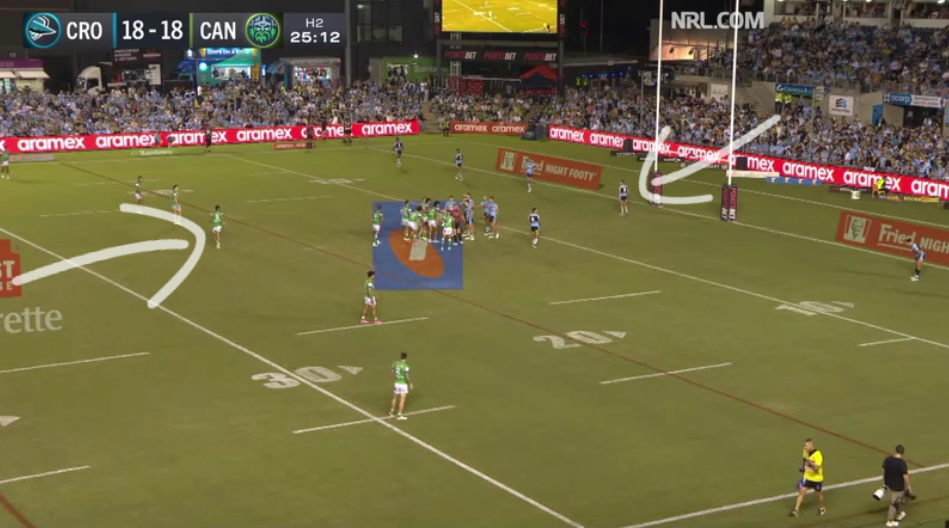When the NRL preview rolls around, I always have a particular match, trend, team, or player in mind to focus on. This week, it’s how teams are defending scrums from the middle of the field.
I have long hated the war against scrums. Rules introduced to reduce or remove them riled me up. But so long as they are a regular enough part of the game, scrum starts are one of the most exciting opportunities for attacking football regardless of who packs it and in what spot—something that has been used as ammunition against our sacred scrums.
Despite disagreeing with so many changes in recent years, one I have liked is the option to choose where a team forms their scrum. By being able to position the scrum down the edges or in the middle, it’s promoted a number of different number matchups, from 6-0 to 4-2 and 3-3. From there, we’re seeing teams try different things on attack and defence.
Oscar covered the Parramatta Eels using Junior Paulo as the first receiver in the NRL Notepad. No other team has a 188cm, 123kg prop who can generate momentum with a carry one-off the scrum or fire a cut-out ball to his winger, who probably should be hugging the paint.

The Cronulla-Sutherland Sharks and Canberra Raiders game provided us with a couple of good examples of how the approach to scrums is developing and the chess match that occurs as the player feeds it.
With a scrum in the middle of the field, most teams will have somebody mirror the fullback or half that positions themselves behind the scrum before the ball is fed. They want to match the numbers as best they can.

In doing so, however, they leave two defenders covering half of the field. With his speed and footwork, Matt Timoko is centimetres away from putting his winger down the sideline.
It’s important that the defending half breaks quickly to cover the ‘weak’ side of the scrum in this situation. You can see Braydon Trindall try to cheat as best he can before the referee points him in closer to the scrum, where he is meant to start.
The Raiders, on the other hand, defend with three either side of the scrum. Unlike the Sharks and most others, they don’t follow the opposition as they move. Will Kennedy and Nicho Hynes are allowed to flip to whatever side they like to create an initial numbers advantage.

The Raiders’ defence must make a fast effort to make up the numbers on the strong side. They need to break quickly and follow the ball to cover from the inside. A little bit late to the party from the inside on this occasion, the three edge defenders track back to buy just enough time and force an error.
Side note: My focus is always drawn so closely to what is happening away from the scrum that it wasn’t until the fifth or sixth time watching it that I noticed how poorly it was packed. I’ll pay that one, scrum haters. It needs to be a bit better than that…
It’s defended well enough here, but an attacking team might be able to strip the Raiders’ edge if they aren’t all on the same page with their movements.
Each team has its own approach to defending scrums, but with the amount of space available to the attacking team, there is no perfect solution. Each approach has pros and cons, and more importantly, for us, it promotes some creativity in breaking them down.
The Sharks have a bye this week, but the interest in how teams defend splits is across the whole competition. Eels v Raiders on Sunday evening is one for the nerds, though. With how the Raiders defend from the middle and the look the Eels gave us through Junior Paulo, the contrasting styles make for an exciting battle from scrum starts in goodball.
